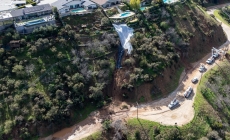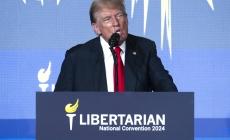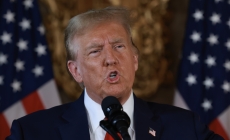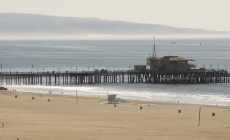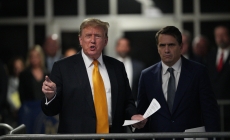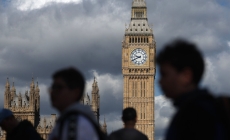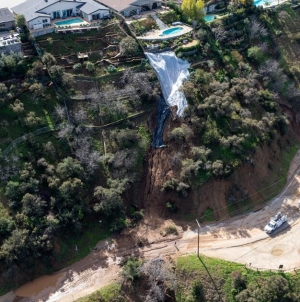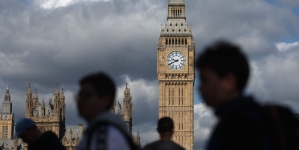SACRAMENTO —
Aiming for more gun safety, the California Legislature fired away with hits and misses in its recently concluded annual session.
The misses are attracting the most attention.
My No. 1 example of a bad miss was the bill the Legislature passed to impose a new 11% state excise tax on firearm and ammunition sales. Again, the ruling Democrats’ answer to a problem was to raise taxes rather than prioritize spending.
Gov. Gavin Newsom hasn’t indicated how he feels about that tax. Gun control groups are trying to pressure him into signing the measure. They’re worried he might veto it. He should.
A legislative bull’s-eye was a bill to resume restrictions on when concealed weapons can be carried in public. The U.S. Supreme Court essentially tossed out the old law last year.
The proposed new regulation makes much sense: We shouldn’t allow just anyone to cart around loaded guns everywhere — in bars, in city halls, on playgrounds.
“You don’t need a gun to go to your daughter’s soccer game,” says state Sen. Anthony Portantino (D-Burbank), author of Senate Bill 2. “You need a water bottle and orange slices.”
Another miss: Legislative adoption of Newsom’s resolution calling for a constitutional convention to adopt a 28th Amendment mandating new federal gun controls.
Newsom’s proposals are basically sound: Universal background checks on people purchasing guns and a minimum age of 21 for the buyers. A “reasonable” wait period before picking up the gun. And no assault weapons. These restrictions are already the law in California and should be across gun-fetish America.
But a constitutional convention is a scary notion because red states could dominate and wind up bolstering gun rights while weakening other protections — such as those embodied in the 1st Amendment.
“A terrible idea,” UC Berkeley Law School Dean Erwin Chemerinsky, a constitutional scholar, has asserted.
Anyway, in this political climate, Newsom has absolutely no chance of getting a constitutional amendment adopted that would strengthen gun control. Zilch. It would require ratification by three-fourths of the states.
The governor seems primarily interested in raising his national profile and raking in political donations.
The resolution for the constitutional convention was adopted on a party-line vote in each house, both of which have Democratic super-majorities. But several Democrats declined to vote.
The tax on firearms and ammunition would generate roughly $160 million annually. The money would go to some very good programs that have proved to be successful in reducing gun violence.
There’d be $75 million for local gun violence prevention programs and $50 million for school safety, plus millions more for law enforcement to seize firearms from convicted domestic abusers who have restraining orders.
All Californians benefit from these programs — not just law-abiding hunters, skeet shooters and people worried about their own security. And all Californians should pay for them out of the state general fund.
This year’s state budget is a record $311 billion. Surely there’s enough money in the treasury to pay for such worthwhile efforts.
In fact, the governor’s office recently bragged that “last year, Gov. Newsom [invested] a record $156 million … in anti-violence programs uniquely suited to individual community needs.” He did it without raising taxes.
But if the Legislature and governor decide that more tax revenue is needed to enhance those programs, then they should hit up everyone — not just gun owners. It’s doubtful many criminals buy their weapons at gun stores anyway, so they wouldn’t be paying the tax.
The bill’s advocates say the measure is modeled after a century-old federal excise tax — up to 11% — on arms and ammunition. They note this tax has always been supported by the firearms industry. But that is a disingenuous argument.
The federal tax pays for wildlife conservation. Hunters are fine with that. The proposed state tax — first in the nation — would go toward anti-violence, school safety and law enforcement programs traditionally paid for by all beneficiaries.
The bill, AB 28 by Assemblyman Jesse Gabriel (D-Encino), needed a two-thirds majority vote and barely got it.
The bill regulating the carrying of concealed guns would ban these weapons in government buildings, schools, medical facilities, churches, athletic fields and bars, among other “sensitive places.”
It would impose uniform statewide standards for issuing permits to carry concealed firearms. No longer would the issuing of permits be left to the local sheriff’s discretion. New York had a similar law, but the U.S. Supreme Court ruled that it violated 2nd Amendment gun rights.
Portantino tried to pass a bill identical to AB 28 last year, but it fell victim to vengeful politics by a Democratic adversary who has since left the Legislature.
Two weeks ago, his measure passed the Senate 48 to 21 and the Assembly 28 to 8.
Newson long ago announced he’d sign the bill. But gun rights groups already have filed a lawsuit challenging the measure.
The Legislature also scored some lighter hits on gun safety and control.
One simple bill would require that gun buyers be made aware, in writing, about the risks of being around firearms.
“Many people buy firearms because they think it will make them safer at home,” says Assemblyman Marc Berman (D-Menlo Park), author of the bill, AB 1598. “But the evidence is indisputable. Keeping a firearm in your home dramatically increases the likelihood that you or someone you love will be a victim of gun violence …
“You put a gun in the night stand with a clip. And when your spouse comes back from the bathroom in the middle of the night, she becomes a target.”
The measure passed with mostly Democratic votes.
The California Legislature has pretty much maxed out on passing strict gun control laws. The state’s focus now is on defending its current laws in gun-friendly courts, including the highest.
Meanwhile, lawmakers should understand that reaching into gun owners’ pockets is not analogous to justifiably controlling who buys weapons and what types.



